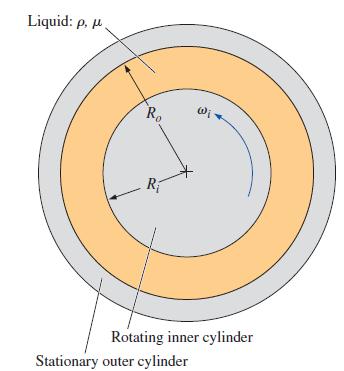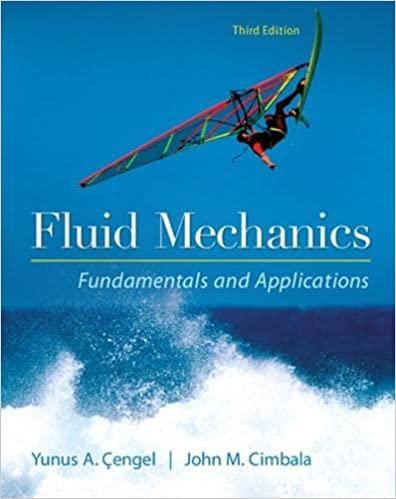Repeat Prob. 996, but let the inner cylinder be stationary and the outer cylinder rotate at angular
Question:
Repeat Prob. 9–96, but let the inner cylinder be stationary and the outer cylinder rotate at angular velocity ωo. Generate an exact solution for uθ(r) using the step-by-step procedure discussed in this chapter.
Data from Problem 96
An incompressible Newtonian liquid is confined between two concentric circular cylinders of infinite length— a solid inner cylinder of radius Ri and a hollow, stationary outer cylinder of radius Ro (Fig. P9–96; the z-axis is out of the page). The inner cylinder rotates at angular velocity ωi. The flow is steady, laminar, and two-dimensional in the rθ-plane. The flow is also rotationally symmetric, meaning that nothing is a function of coordinate θ (uθ and P are functions of radius r only). The flow is also circular, meaning that velocity component ur = 0 everywhere. Generate an exact expression for velocity component uθ as a function of radius r and the other parameters in the problem. You may ignore gravity.
FIGURE P9–96

Step by Step Answer:

Fluid Mechanics Fundamentals And Applications
ISBN: 9780073380322
3rd Edition
Authors: Yunus Cengel, John Cimbala





